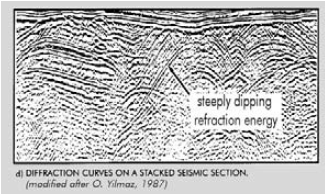Seismic Stratigraphy for Reservoir Characterization – Part I
Because of the high expenses the petroleum industry has to incur in order to find hydrocarbons, any tool that helps predicting what is underneath earth’s surface is very valuable and economically desirable, and reflection seismic has become a very widely used tool, which has been going through development and research, and its implementation is particularly important in exploration and evaluation on stages previous to any kind of drilling techniques application.
How waves travel through the earth’s conforming materials and the models available for its description are very appreciated and often utilized as prospective or proved reservoir characterization technique. It has to be stated here, that as everything in life, for obtaining accuracy and validity from its information, some processes must be followed. Once the seismic data is obtained by methods described on a previous post, we convert it into reliable images of variables related with the real materials being logged (like travel time or velocity) and observe these ‘drawings’ with the intention of identifying how the different geological facies (roughly a type of rock) are distributed, for obtaining a better idea of where in the depositional system that created these sedimentary deposits, hydrocarbons could likely be accumulated, which is the task of a ‘branch’ of geophysics that fuses geology with geophysics, and sometimes other petroleum professionals.
The first phase in seismic stratigraphic studies of a basin (big place for sediment deposition) fill is to delineate genetically related units, which are called Depositional Sequences. These secuences are regionally important and are further subdivided into system tracts, being delineated based on the presence of local unconformities and their laterally equivalent conformities. They contain a grouping of deposits from time-equivalent depositional systems. The depositional sequence is composed of a stack of system tracts. A distinction can be made between lowstand and highstand system tracts, referring to changes in relative sealevel. The basic method for the delineation of Depositional Sequence Boundaries is called ‘reflection termination mapping’ technique.
Basic Seismic Observations
When we look to a seismic section, we can distinguish four major groups of systematic reflections:
Sedimentary Reflections – represents bedding planes
Unconformities – discontinuities in the geological record
Artefacts – like diffractions, multiples, etc
Non-sedimentary reflections – like fault planes, fluid contacts, etc






good imformation